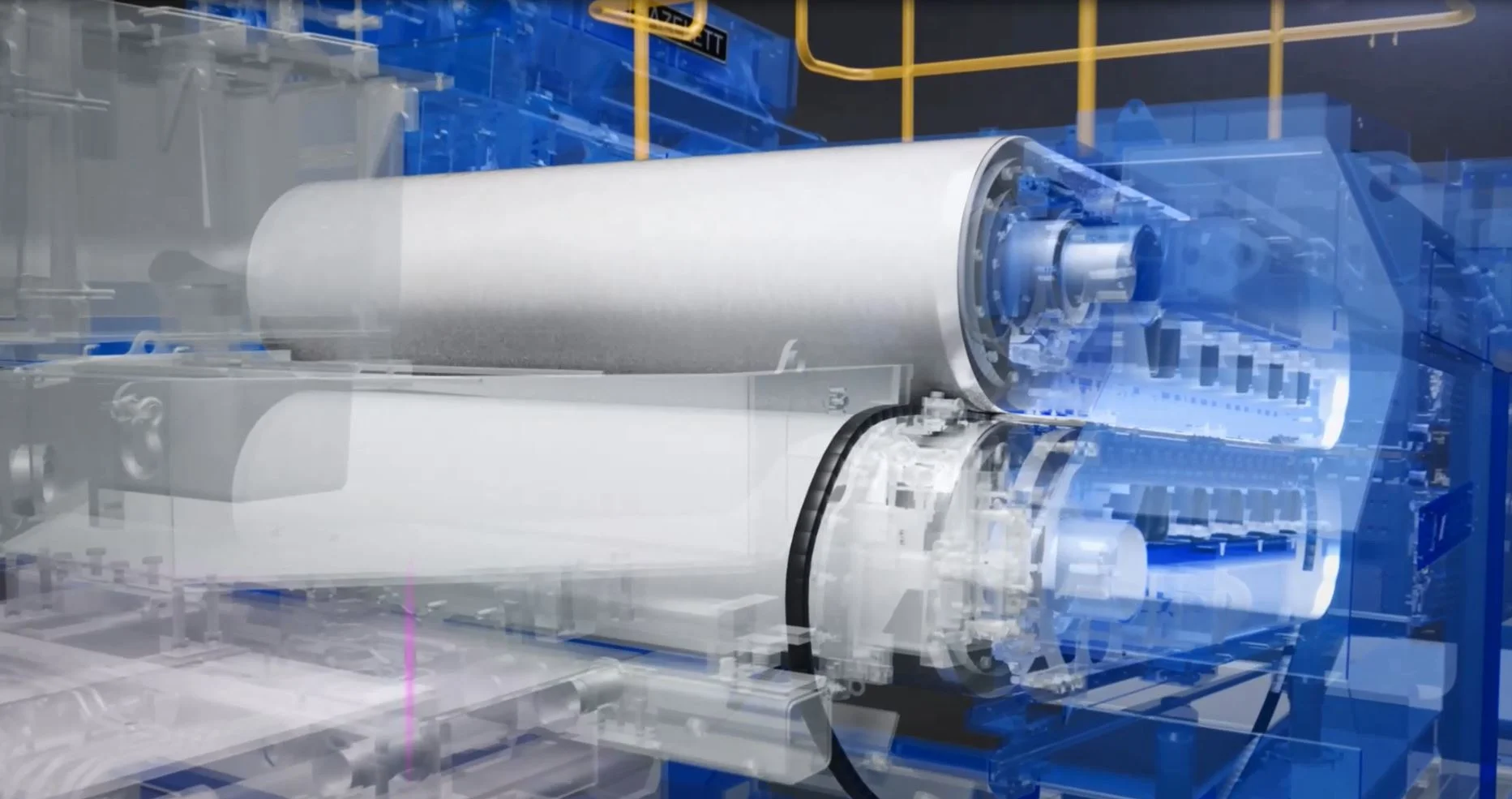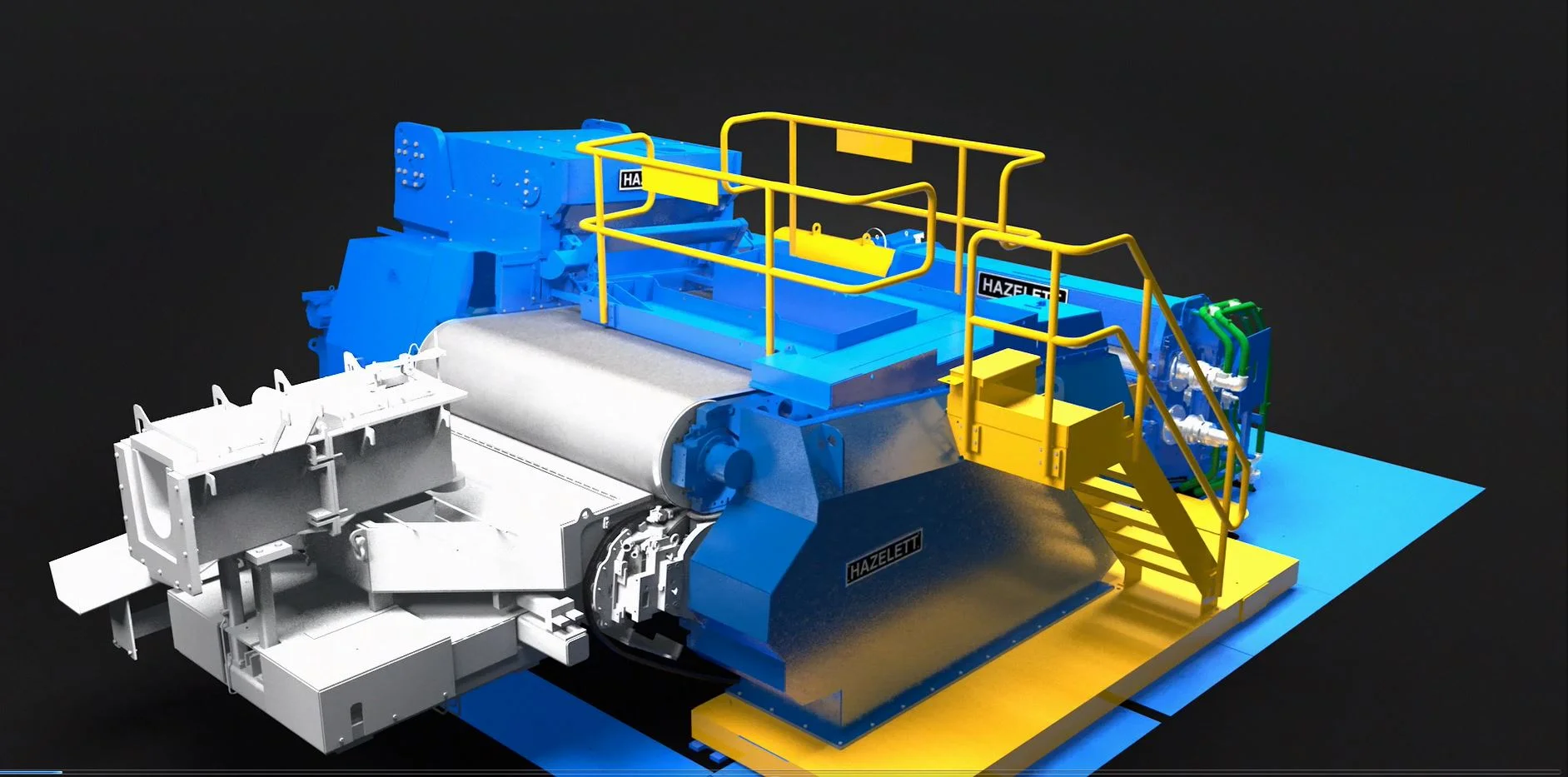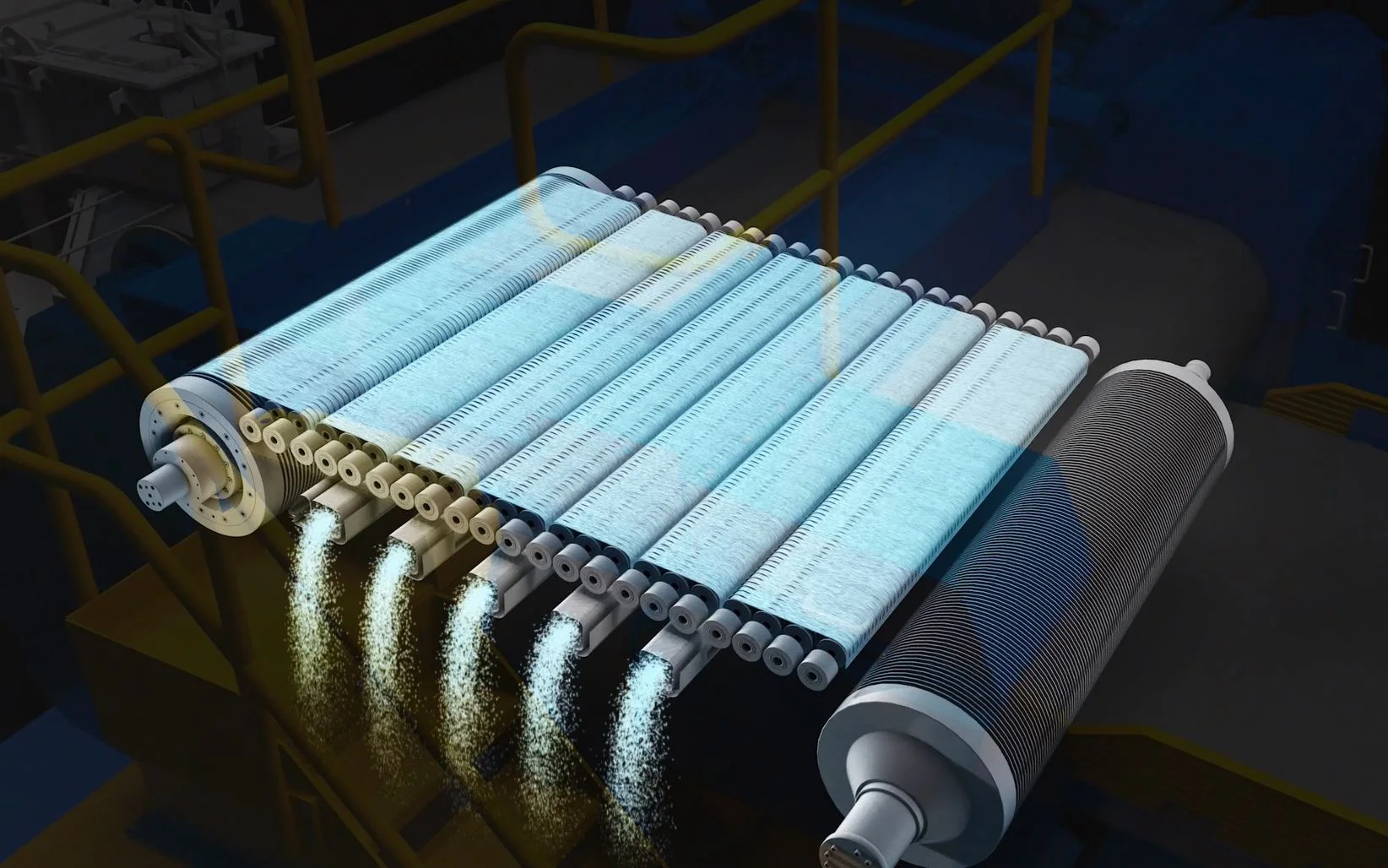Hazelett casting technology - animations
Hazelett twin-belt casting machine for aluminum
The Hazelett® twin-belt caster features a straight, parallel moving mold using belts as mold surfaces. The moving belts define the upper and lower mold surfaces. Chains of moving edge blocks form the sides of the mold.
Molten metal is introduced between the belts and is solidified as it travels within the moving mold. Solidification occurs as heat is transferred to water on the backside of the belts. Heat transfer can be adjusted and controlled to achieve high production rates and superior strip quality.
Behind the belts, precisely machined finned back-up rolls support the belts while allowing water to pass. Magnetic back up rolls, positioned in the first part of the mold, counteract belt instability due to thermal bending induced by high heat fluxes.
The casting belts are subject to a range of temperatures and heat fluxes. Induction belt preheating elevates the temperature of the belts prior to entering the mold. This counteracts belt instability due to cold framing and removes moisture from the belt surface.
Magnetic back-up rolls positioned in the first part of the mold counteract belt instability due to thermal bending induced by high heat fluxes.
To control and adjust heat transfer, various belt coatings and shrouding gases are used.







